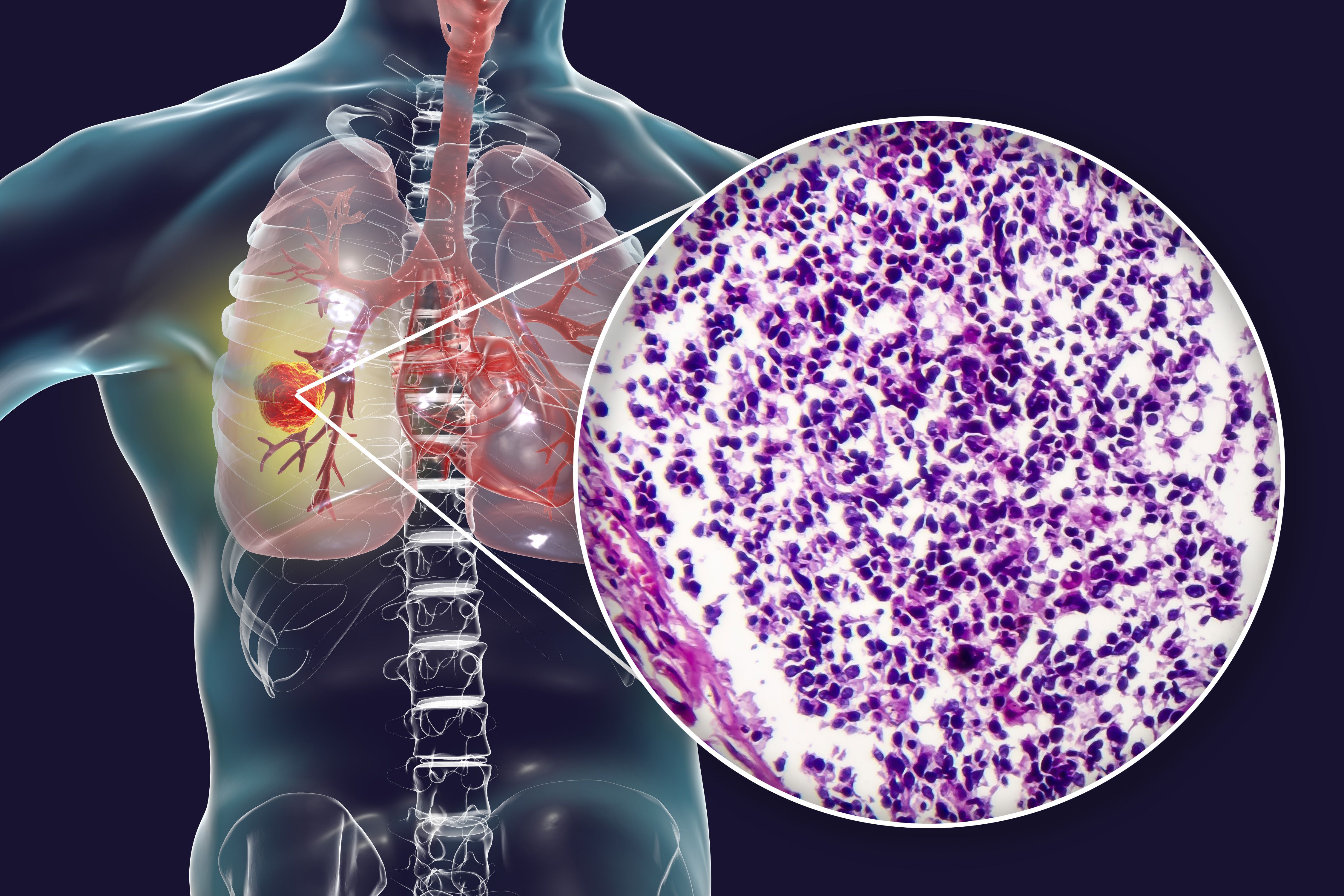Second-line Lurbinectedin Plus Pembrolizumab is Safe and Effective in Relapsed SCLC
Lurbinectedin in combination with pembrolizumab in the second-line shows promising safety and efficacy in relapsed small cell lung cancer

Results of the phase 1/2 LUPER study (NCT04358237) showed the combination of lurbinectedin (Zepzelca) and pembrolizumab (Keytruda) in the second-line to be associated with a manageable safety profile and early efficacy in a small population of patients with relapsed small-cell lung cancer (SCLC), according to findings presented at the 2022 American Society of Clinical Oncology.1
Treatment with lurbinectedin plus pembrolizumab resulted in an overall response rate (ORR) of 30.8% among the 13 patients [median age, 66 years (range, 43-78); 54% male] enrolled onto the trial across 3 hospitals in Spain.
As of March 10, 2022, 4 patients remained on treatment. The preliminary findings showed that the median duration of treatment was 3.1 [range, 0-14.6] months. Moreover, a median duration of response (DOR) has not yet been reached. Seventy-five percent of patients were shown to derive a response to treatment at 9 months [95% CI; 42.6%-100%).
Previously, the Food and Drug Administration (FDA) approved the use of lurbinectedin for the treatment of adults with metastatic SCLC with disease progression on or following platinum-based chemotherapy.2
Those findings demonstrated that lurbinectedin monotherapy demonstrated an ORR of 35% and a median DOR of 5.3 months per investigator assessment.
Here, the study authors presented preliminary data from the early-phase trial that, according to the investigators, is assessing the safety, tolerability and efficacy of lurbinectedin plus pembrolizumab in this patient population for the first time.
Enrolled patients have to be aged 18 years or older, have an ECOG Performance Status of 0-1 and have measurable disease per RECIST v.1.1. Additionally, patients must have had progression to a chemotherapy-containing regimen at least 4 weeks prior to enrolling into the study.
Patients were excluded from enrollment if they had received prior treatment with an immunotherapy. However, patients with stable, asymptomatic and treated brain metastases are allowed onto the trial.
The aim of the phase 1 portion of the trial was to identify a maximum tolerated dose as well as the recommended phase 2 dose of the combination treatment. As for the phase 2 portion of the trial, the goal is to analyze efficacy of the study treatment per ORR. Additional endpoints include safety, preliminary efficacy and the pharmacokinetics of the combination.
Patients enrolled into the phase 1 trial were administered 200 mg of pembrolizumab every 3 weeks (Q3W) plus a starting dose of 2.4 mg/m2 of lurbinectedin Q3W. A grade 3 fatigue occurred in the phase 1 portion of the trial. That adverse event (AE) caused the patient to have a dose reduction.
After further evaluation, the investigators identified the recommended phase 2 dose as 3.2 mg/m2 of lurbinectedin and 200 mg of pembrolizumab administered Q3W.
Early results showed that 84.6% of the population reported experiencing an any-grade treatment-emergent AE. The most common TEAE that was hematologic was neutropenia (53.9% any grade). Fatigue of any-grade severity (76.9%) was the most common non-hematologic TEAE. Of note, there was one patient death, however it was attributed to COVID-19.








